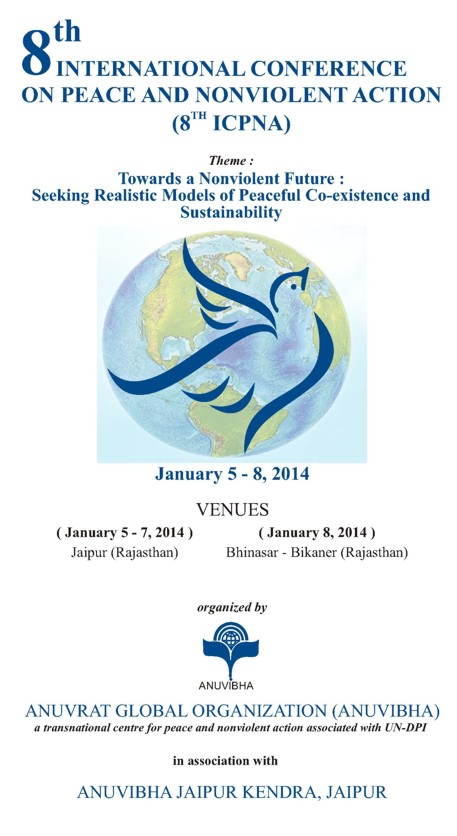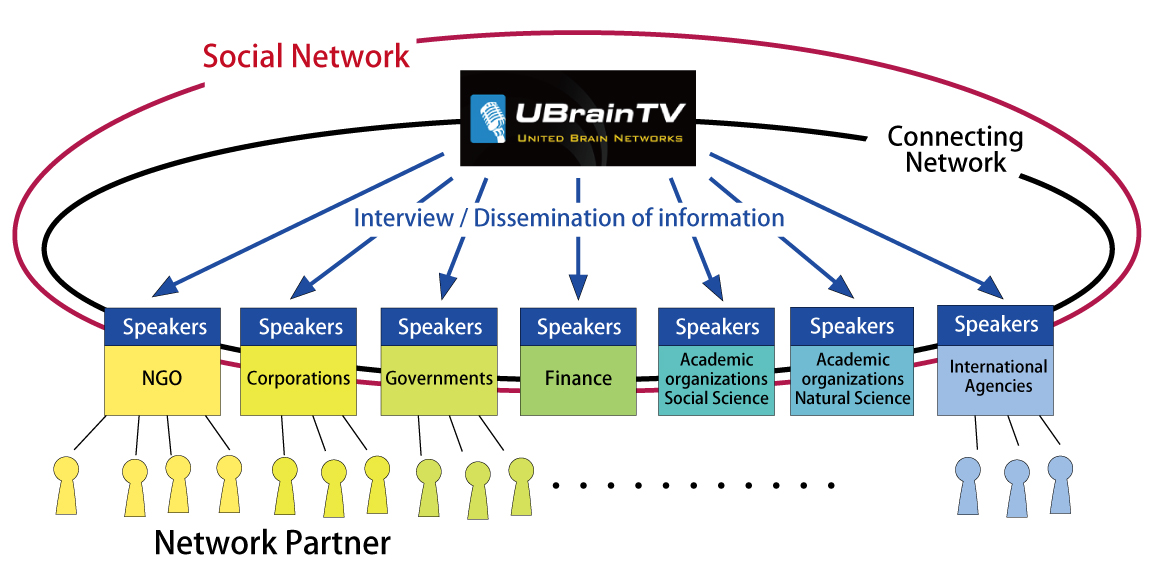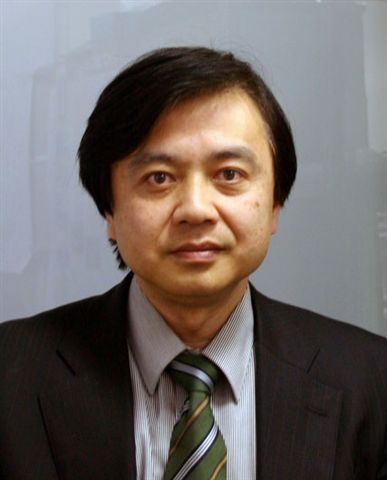 | 8th International Conference on Peace and Nonviolent Action |
We are still witnessing a number of international and internal conflicts in many parts of the world. Conflicts have taken many lives in Asia too. The unstable situations in North Korea as well as Kashmir are still continuing nightmares. It has been proved an illusion that the end of cold war might bring the end of violence on both international and national level.
Not only physical violence, but also structural violence, which may turn out to be physical violence in the course of time, becomes more and more noticeable. The victory of the so-called 'Free World' has changed the world to a Darwinian jungle where the weak become the victims of the strong.
A crucial question is how practice of non-violence can solve the 'violent' situations mentioned so far. It is clear that non-violence is not merely an impracticable proposition, but a workable reality. However, it requires mature deliberation of strategy to make full use of given environments and utilities. According to Gandhi, nonviolence is not a passive acceptance of status quo and thereby surrender, but an active engagement and struggle. He often refers to a long-term nonviolent actor as a 'soldier' and the struggle to found society on nonviolent principles as a 'war'. In order to win the 'war', you must have a good strategy and have surrounding elements on your side.
In seeking for new prospects for a non-violence strategy, there are a few encouraging phenomena to be made use of.
One positive phenomenon is the Information Revolution. The rapid development of the Internet and new media is going to fill up the information-gap between the North and the South, as well as between the rich and the poor.
1. New type of media
Media is one of the most powerful tools in feeding our minds and shaping society and the world at large, for better or for worse. As American singer and poet Jim Morrison famously said, “Whoever controls the media, controls the mind”.
TV has been one of the strongest media in terms of social influence. Until now, only a limited number of companies have been granted the right to broadcast on the air while enjoying special privileges.
Now the situation is changing. For a quarter of a century, there has been a debate on the convergence of the internet and TV. This has been more difficult than expected, partly due to technical problems, and partly due to the power to protect special privileges of the current broadcasting companies. Now in 2014, we are starting to see real convergence happening. We are able to watch certain TV contents wherever and however we want via the internet on our computers, or even via mobile phones. In the United Kingdom, a Youtube channel has been integrated to certain smart TVs.
The age of Web TV is no doubt coming, opening the doors to the public to enter the world of media. What comes into questioning now is “What role should media play in the current global world?“A Web TV is considered more powerful than the traditional TV as you can watch the programs on demand wherever and however you want with a computer or mobile phone. There are already a number of Web TVs operating around the world, including YouTube which allows users to upload, view and share videos. These new emerging media have revolutionized the world, allowing anyone and almost everyone with access to the internet to speak out and share what is actually happening around the world. A good example is the Arab spring, of which new media such as YouTube played a crucial role.
Whilst most new online media are targeted at the mass audience, there is also a need for the creation of a specialized media for a targeted audience.
Since three years I have been involved in a new type of Web TV, namely UBrainTV.
UBrainTV is a Web TV and networking platform operated by United Brain Networks in London. Focused on issues in relation to energy, environment, sustainability, responsible finance and peace building, it broadcasts interviews, lectures, technology reports and more. UBrainTV features people who are passionate about sustainability and finding solutions to global problems.The aim is to bring about tangible change for our common future through sharing ideas and mobilizing the best minds of our generation.
2. Characteristics
There are several characteristics and achievements to note of UBrainTV.
A. Connecting various key actors
The world is now facing numerous challenges including resource scarcity, population growth, climate change and conflicts. In solving these global problems, a cross border approach is inevitable. As of today, there has been lack of communication and cooperation among the diverse sectors. For example, academic associations may conduct research on the current global society or the environment and issue reports on their findings, however global problems cannot be solved without stronger collaboration with other actors such as international agencies, civil organizations and corporations and lead to implementation. It is indispensable for these diverse sectors to collaborate and cooperate in tackling the global challenges we face today.
Media have kept some distance from becoming involved with the main actors who try to trigger change and shape the future. It has been considered that media’s role is in reporting about the actors and that the objective stance of reporting may be harmed by the active involvement in coordination.
UBrainTV is a unique media in this respect. As its vision is to become the platform to trigger change, UBrainTV conducts interviews with some of the world leading thought leaders and players who are shaping the future, and disseminates this information through its independantly established web TV UBrainTV.com. Through these interviews, UBrainTV establishes its own network and connects these diverse players.
For a conventional media, an interview would be the conducted and that would be the end. However with UBrainTV, the interview is the start of the relationship. As of today, it has conducted interviews with over 300 dynamic individuals including entrepreneurs, academics, scientists, diplomats, politicians, activists, theologians, and more from around the world.

In order to strengthen the network established through UBrainTV’s interviews, UBrainTV has launched the UBrain Club, an invitation-only online space where the growing network of actors from diverse sectors can share ideas and work together towards our common goal. The 300 plus interviewees form the core of the club. Membership will be expanding from January 2014 to allow more people from the general public to join the club. The UBrain Club will provide various membership benefits including opportunities for members to meet in person, such as the Munakata Eco-100 International Forum in May. This forum is worth noting in detail. The provisional theme is “Oceans of the Future ”. The forum will bring together 100 environmental leaders from around the world including academics from the natural sciences, social sciences and humanities, representatives of international organisations, businesses, financial institutions and national and local governments, activists, and cultural figures. Participants will discuss possible solutions to some of the problems facing the global environment, coming up with practical suggestions that can be shared globally. UBrainTV’s forum is a good opportunity to not only learn and share information online however to actually meet in person and explore solutions which could lead to collaboration.
B. Global - Local approach
Under the traditional TV media system, it is not easy for local people to share their local information or personal messages with an international audience. In most cases, traditional TV broadcasting companies have mainly covered national and/or local news targeted at a national and/or local audience. There are only a few global TV media like CNN targeted at an international audience. Hardly any TV media that connects “local” with “global”, and “global” with “local” exists today.
As UBrainTV has established its network and audience from various countries around the world, and being an online media, it makes it possible to connect “global” with “local” and visa versa. This global with local approach is vital in solving the various global problems we face today such as environmental issues.
C. Horizontal approach
The traditional broadcasting companies have centralized power. They are well called “mass media”. The information flow is in most cases one way, i.e., from media to viewers and the relation is “vertical”.

In case of UBrainTV, the viewers can join the UBrain Club and send information to the world through a number of channels. The one way relation becomes a two way relation.
UBrainTV is, in other words, a networking media that connects various types of people. This horizontal approach can activate civil society since people are not merely a passive being to receive information but also an active being to send and share information.
The traditional major broadcasting companies have dealt with the “mass audience” and therefore their programs are directed towards “average people”, or “majority”. In case of UBrainTV, more attention can be directed towards targeted audience, special needs and the quality rather than quantity.
Conclusive remarks;
In response to the question, “What role should media play in the current global world?“, with the new media emerging utilizing the world wide web, there are new roles which media can play. UBrainTV is not merely a media that reports and disseminates information, however it is a media for change. It reports with a vision of making tangible contribution to society and creating a better future, through mobilizing the best minds of our generation and inspiring the younger generation. We shall see how its initiatives develop and what tangible differences it contributes to (or not) in the years a head. This shall become a good example of the possibilities of an independent web TV.
References
- UBrainTV http://www.ubraintv.com/
 Prof. Dr. Katsuya Kodama
Prof. Dr. Katsuya Kodama